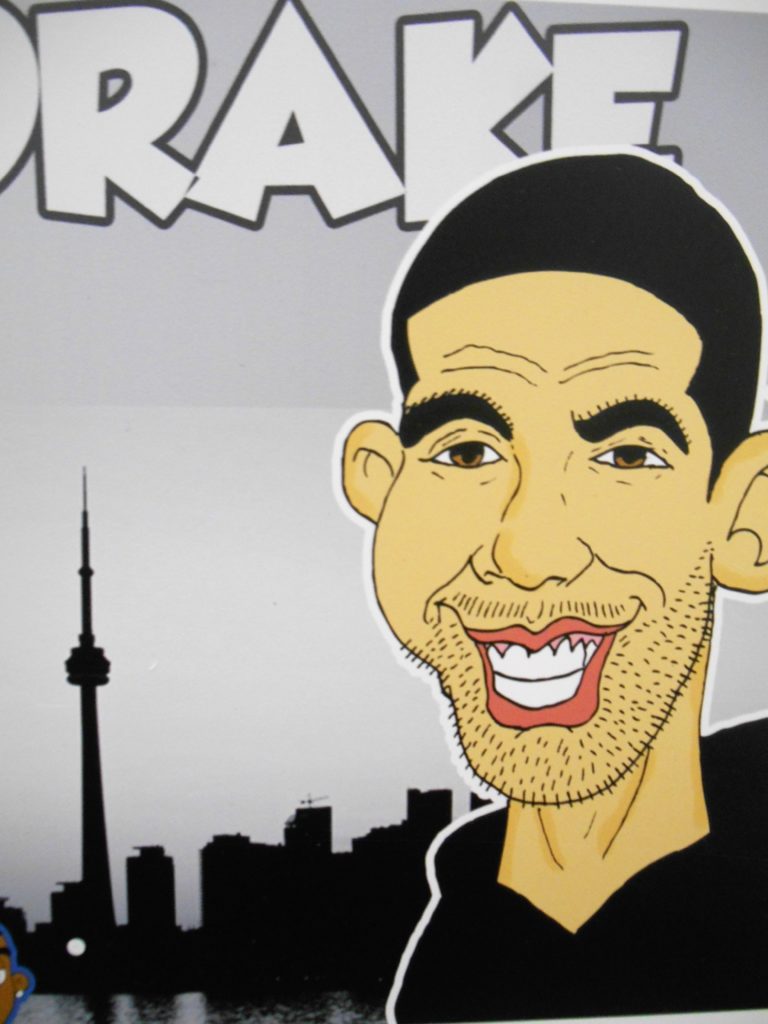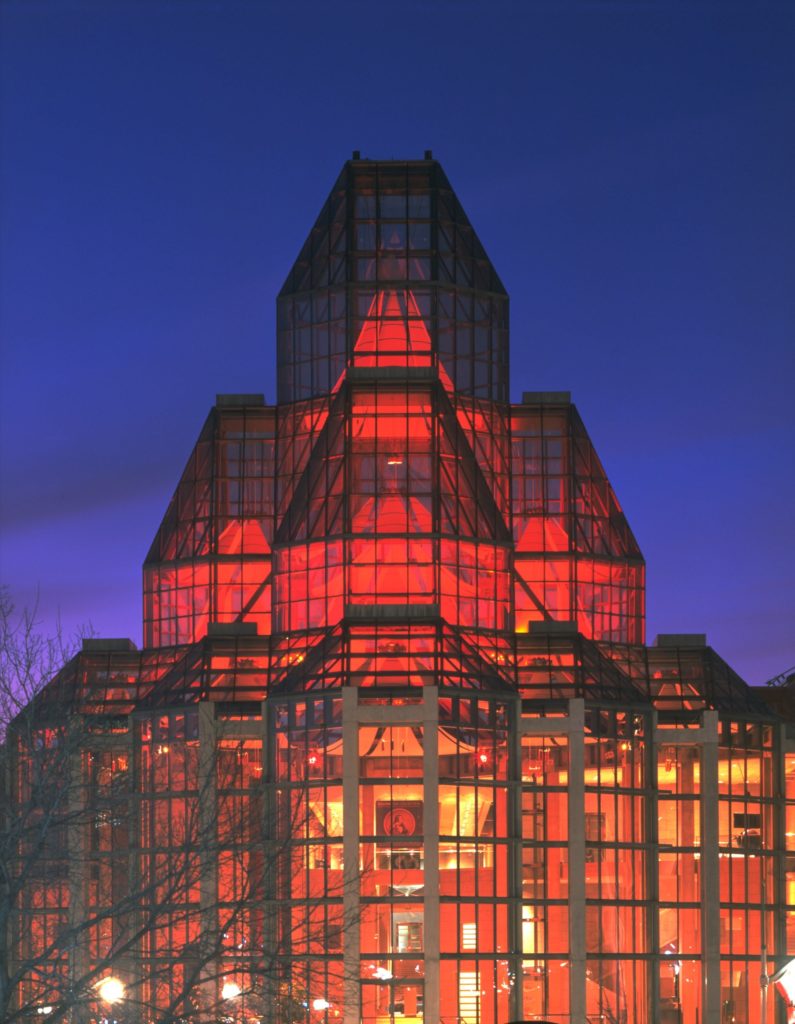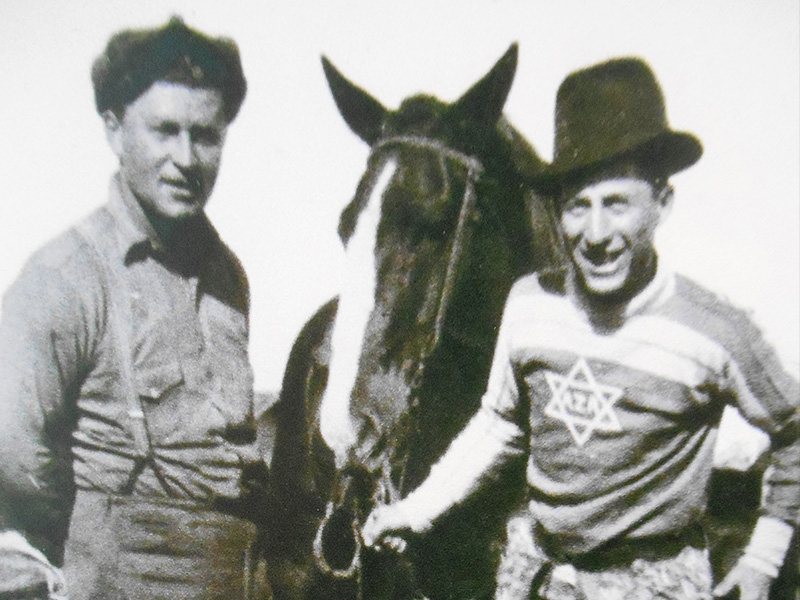On a sunny Ottawa afternoon in a very sunny year – as our nation celebrates its 150th anniversary – I happened on a special exhibit. The Canadian Jewish Experience is small but packed with information, covering 250 years of Jewish history in Canada, from pedlars to politicians to stars of stage and screen.
Tucked away at 30 Metcalfe St. in the heart of downtown Ottawa, this free exhibit treats visitors to nine panels illustrated by illuminating archival photographs that tell of both the familiar (Herb Gray, Lorne Greene) and the less familiar (Ezekiel Hart, Drake).

Of course, familiarity may depend on your generation. Whereas our son knew all about singer Drake and his Jewish roots – although perhaps not his two bar mitzvahs – we, his parents, were only vaguely familiar with the multiple-award winner’s family and career. And though I was intrigued to learn about Alberta’s Curly Gurevitch, the “Cowboy from the Colony,” shown in a 1930 photo wearing chaps, cowboy boots, Magen David emblazoned on his shirt, Curly’s existence was not news to my Winnipeg-bred husband.
READ: NOT OY CANADA. CANADA’S NATIONAL ANTHEM GETS YIDDISHIZED
The Jewish experience in Canada has not always been easy, of course. Prejudice prevailed until the 1960s, the exhibit explains, when that changed – although not completely, as evidenced by a rash of recent hate crimes. In 1914, there were 100,000 Jews in Canada; today there are roughly 400,000. Besides traditional early occupations – pedlars, shopkeepers, fur traders, garment workers – 11 Jewish farm colonies once existed on the Prairies.
The Depression years halted immigration, a situation compounded during the war years by the odious None is Too Many government policy applied to Jews fleeing Nazi Europe. Canada’s borders opened after the war, welcoming 40,000 Holocaust survivors, many of them orphans. In recent years, Jewish immigrants from North Africa and Russia have arrived in greater numbers.
In a panel entitled “War and Peace,” visitors are reminded that Jews have fought for Canada in every war, and that 38 per cent of male Jews volunteered to fight in the Second World War, amounting to 16,880 men. Nearly 2,000 of these soldiers won military awards; 420 died and were buried with both the Maple Leaf and the Star of David on their graves.
While many remember that Barney Danson, minister of defence in the Pierre Trudeau government, had lost an eye during the D-Day invasion, he was far from Canada’s only Jewish war hero. Sgt. David Hart was decorated by King George VI for his gallantry at Dieppe. In 1944, the Canadian Jewish Congress published comic books highlighting the exploits of Jewish war heroes as a morale booster and recruitment tool.
There is, naturally, a collection of “firsts,” like Ezekiel Hart becoming the first Jew elected to serve in the lower house in 1807. However, Hart was banned from taking office due to his religion. This would change in 1832, when Jews could take their own religious oath of office, allowing them to legally occupy political office.
The Hart Affair paved the way for more Jewish political firsts. In 1871, Henry Nathan was elected to serve in the new Canadian House of Commons; in 1955, David Croll became the first Jewish senator; in 1969, Herb Gray, first federal cabinet minister; in 1971, David Lewis, first to lead a national political party; in 1972, David Barrett, first provincial premier.

There are almost too many world-famous Canadian Jewish architects and builders to mention. Here are just a few superstars: at 29 years old, McGill graduate Moshe Safdie, designed his strikingly original modular housing unit, Habitat 67; Ottawa’s National Gallery is another Safdie design. World-renowned architect Frank Gehry hails from Toronto. The esteemed Cornelia Oberlander, now based in Vancouver, began her career as a landscape architect.
This wide-ranging exhibit, touching as it does on every aspect of Canadian life, paints a portrait of the diversity typical of the country in which Jews, native or foreign-born, made their mark.
In the sports world, among names like David Hart, who donated hockey’s Hart Trophy in the 1920s, and whose son Cecil was a longtime Montreal Canadiens coach and general manager, there also appears 1928 Olympic running champion Fanny (Bobbie) Rosenfeld, as well as the lesser-known saga of Montrealer Louis Rubenstein.
Rubenstein won the gold medal at what is considered the first world figure skating championship in 1890 (the event was not official, as there was not yet an international federation). First, the Russian hosts tried to prevent him from competing, then they tried to deny him his victory. Undeterred, the lifetime athlete referred to as the “father of Canadian figure skating” later became known as the “father of bowling in Canada.” Similar tenacity was shown by Canadian Jewish boxers Sammy Luftspring and Norman (Baby) Yack when they protested Nazi policies by boycotting the 1936 Olympic Games in Berlin.
These are inspirational stories, like so many in this exhibit. As a result, this collection should intrigue visitors from every region and demographic. Visitors may indeed find the exhibit’s inspiration contagious.
Once you’re in Ottawa, make sure to drop by Moshe Safdie’s National Gallery, an imposing, soaring structure that contains a wealth of Canadian and international art. Both the current Photography in Canada 1960-2000 and Indigenous Art 1968-to Present exhibits are fascinating, but this time I found my gaze wandering upward, dazzled by Safdie’s vision, as I toured the gallery as if for the very first time. n
If you go: The Canadian Jewish Experience, 30 Metcalfe St., until Dec. 31, 2017. Information on the exhibit’s origins and many stunning archival photographs are available at www.cje2017.com


